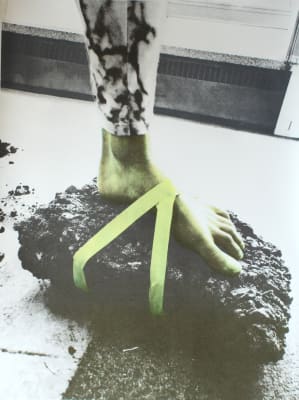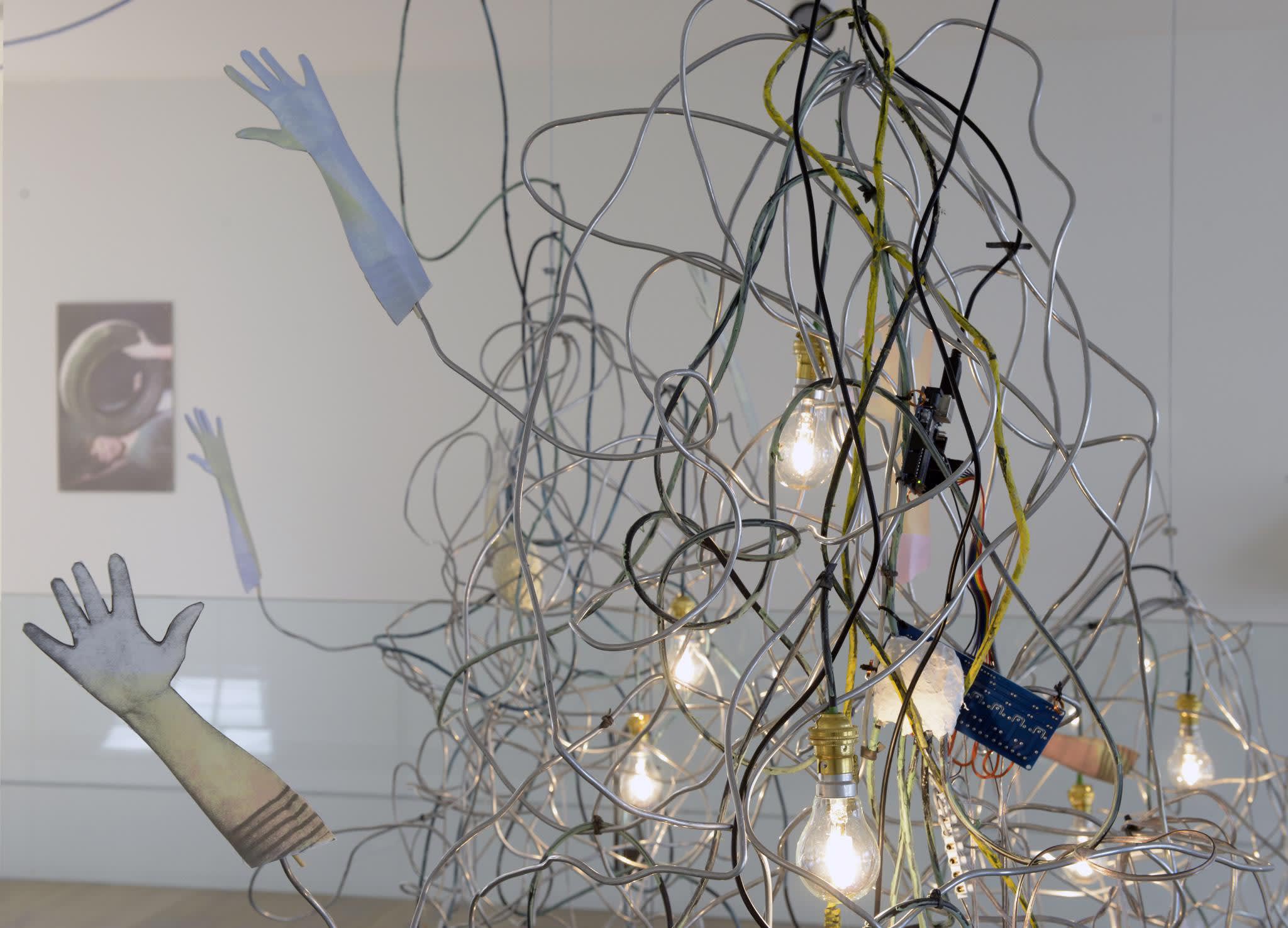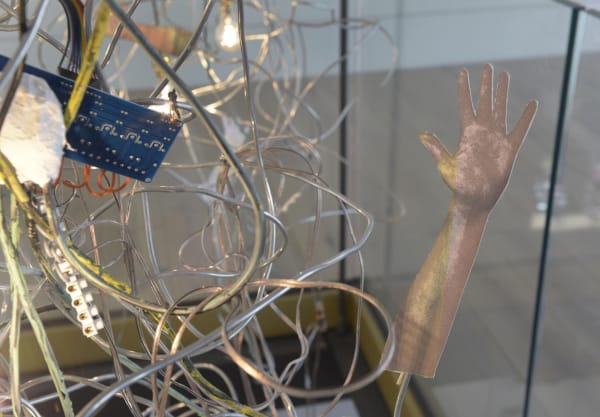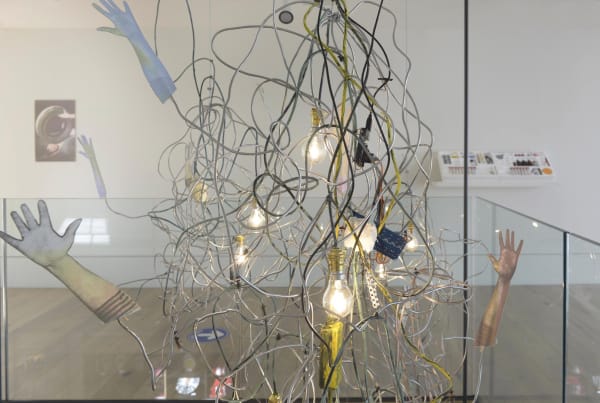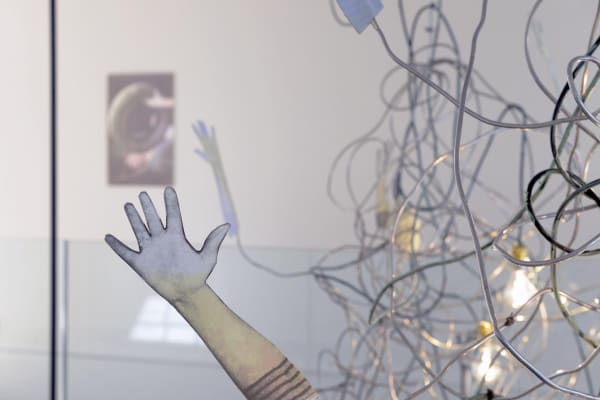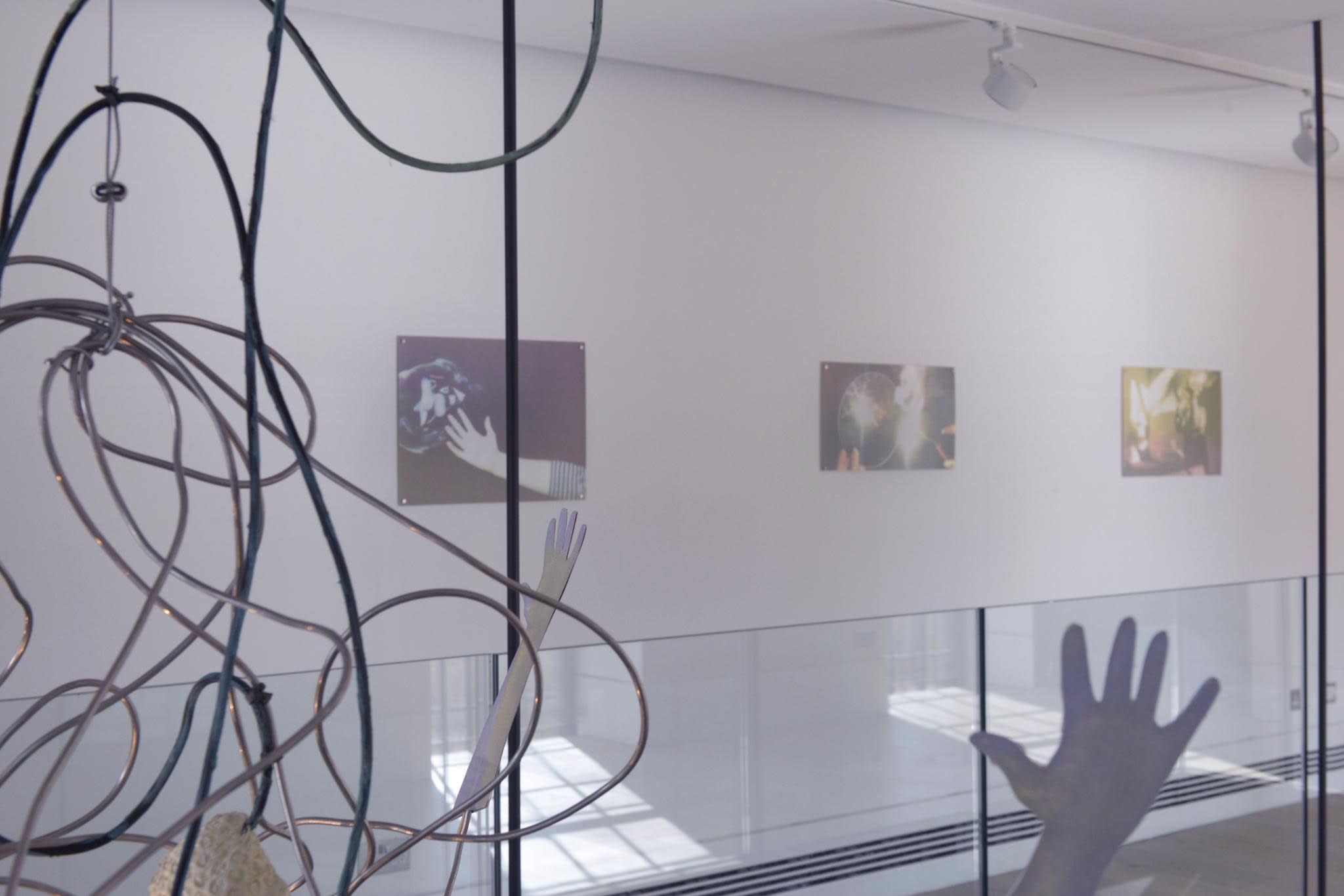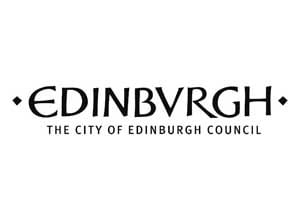With the aid of a children’s chemistry set and a selection of household chemicals, Jessica Ramm presents a cycle of prints that evidence everyday magic. Her chemical and physical experiments propose alternative ways of navigating humanity’s symbiotic relationship with the material environment while paying particular attention to the extravagance of human aspiration. Her printed images focus on relationships of contingency, depicting states of being that are conditioned by external factors or subject to unforeseen effects.
Experiment number 7 in the chemistry set requires a mixture of salt and ammonium chloride to be heated over a flame. When a material turns straight from a solid to a gas, this process is called sublimation. When the ammonium chloride gas cools it regains solid form as a dusty white powder; a process called deposition. In this way the salt and ammonium chloride can be purified or reclaimed. Beyond this experiment, compounds and interacting substances are not always so easily separated, whether animal mineral or vegetable. There are credit-card particles gathering inside fish and radiocaesium particles flowing through ground water and mercury from energy efficient light bulbs filtering through the oceans.
In contrast to the heavy, sticky and dusty materials Jessica encounters when making sculpture, her printed images focus on material relationships that are normally too fleeting to be noticed. The medium of print makes it possible for her to propose visions of surreal spaces in which elemental forces are held at bay. Like pristine images of beaches and blue skies found in travel brochures, they present spaces and relationships laid out for the appreciation of the camera’s eye. Her construction process involves taking a digital photograph and breaking it apart to separate out various wavelengths of light. These are then reconstructed by hand, laying down washes of transparent colour on white paper to produce an object that has more in common with dreams than with documentary photographs.
In addition to physical forces, chemical compositions, metabolic reactions and contaminations, Jessica is curious about the narratives that inform civilisations ordering of nature. The title Stumbling Block refers to an idiom often used to describe an impediment to progress or understanding that can also be characterised as perplexity. Many of the works in the exhibition are influenced by the writing of Charles MacKay published in ‘Extraordinary Popular Delusions and the Madness of Crowds’ 1841, in which he scathingly debunks a range of ‘peculiar delusions’ and ‘follies’ that have captured popular imagination throughout history, such as Tulip Mania, the search for the philosophers stone and the art of the Mineral Magnetisers among others. His sensationalist opinions were a product of their time, as the editors of Jessica’s copy of the book (2008 edition) are careful to point out.
Narrative and metabolism are strange bedfellows, but they share a voracious appetite. Since the publication of MacKay’s account of 17th century Tulipmania, a cascade of speculative bubbles have expanded and burst, including the dot-com bubble, uranium bubble, and numerous housing bubbles. In 2017 economists pronounced the arrival of ‘the everything bubble.’ When this bubble finally bursts, phantom speculative wealth and fictitious capital will be stripped from the financial system and excessive monetary liquidity will leak down the plughole. For the time being, consumption and desire continue to be propelled forward by waves of incurable and pernicious optimism, and it is likely that the enormity of our dilemma will only become visible on the horizon when it’s too late.
"Men, it has been well said, think in herds; it will be seen that they go mad in herds, while they only recover their senses slowly, and one by one."
Charles MacKay
